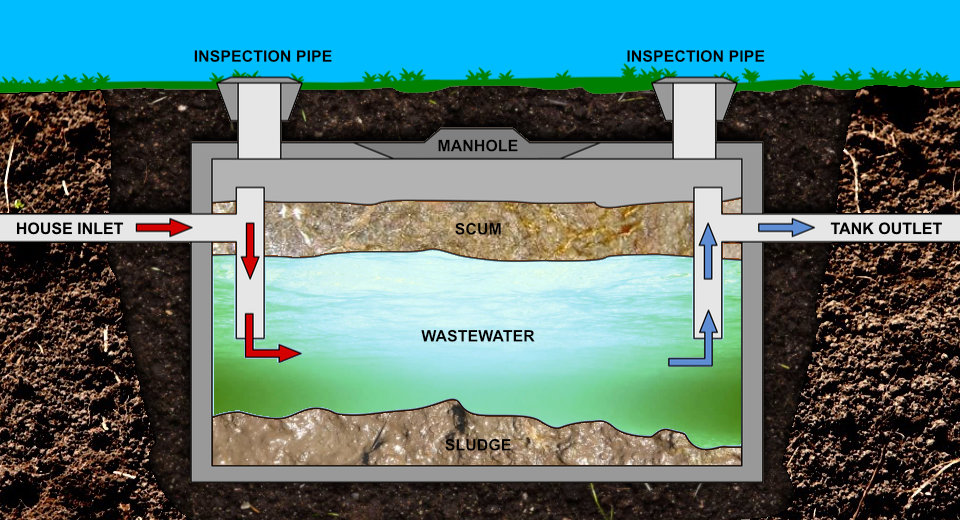What breaks down sewage in a septic tank?
What is a septic tank sewage system?
Commonly used in rural areas without access to centralised sewer systems, a septic tank is essentially an underground chamber made from concrete, fibreglass, or plastic which breaks down waste matter by the process of decomposition and drainage.

A septic system generally contains the following functional parts:
- A septic tank: this can be for all wastewater from a home, or for toilet discharge only A septic tank can also be a single tank or a multi-chamber septic system
- A disposal area: this is usually a sand mound or a trench, as you shouldn't discharge septic waste above ground
- A grease trap: common in the commercial food industry and used to stop oil and grease from going down the drain
- Drainage pipes

How does a Septic Tank break down sewage?
A septic tank works by the simple process of biological decomposition and distribution drainage. Bacterial microorganisms break down the waste inside a septic tank which can then be safely redistributed or disposed of.
Septic Tanks and the sewage process
- All waste flows into the Septic tank. This can include all wastewater from a home, or toilet discharge only
- This waste fills most of the tank and aerobic bacteria begin breaking down the organic matter.
- Broken-down solids fall to the bottom of the tank creating a sludge layer of organic solids and the byproducts of bacterial decomposition.
- Some of the matter (ie. grease and fats) float to the top of the tank and form a scum layer.
- A filter prevents most solids from entering the outlet pipe.
- As new wastewater enters the tank, it displaces the matter that's already there. This water flows out of the septic tank and into a drain field.
- The drain field is made of perforated pipes buried in trenches filled with gravel.
- Holes in the drain septic field pipe slowly allow the watery waste to seep into surrounding gravel.
- Gravel around pipes allows water to flow into soil and oxygen to reach bacteria.
- Aerobic bacteria in gravel and soil complete the decomposition of the waste.
- Clean water seeps down into the groundwater and aquifer.
Resources
US Environmental Protection Agency - How Septic Systems Works